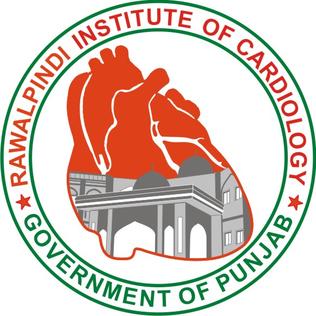
Monash Medical Centre (MMC) is a teaching hospital in Melbourne, Australia. It provides specialist tertiary-level healthcare to the Melbourne's south-east.

The Aga Khan University Hospital (AKUH) in Karachi, established in 1985, is the primary teaching site of the Aga Khan University's (AKU) Faculty of Health Sciences. Founded by the Aga Khan, the hospital provides a broad range of secondary and tertiary care, including diagnosis of disease and team management of patient care.

Mayor of Karachi is the executive of the Karachi metropolitan corporation and the Karachi local government system of the city of Karachi which is the third tier of governance in Pakistan after Federal and provincial governments.
Civil Hospital Karachi, officially known as Dr. Ruth K. M. Pfau Civil Hospital Karachi, is a 1,900-bed tertiary care public hospital that imparts both undergraduate and postgraduate teaching and training.
The Liaquat National Hospital is located at Stadium Road, Karachi, Sindh, Pakistan.

Punjab Institute of Cardiology (PIC), located in Lahore, Pakistan, is a 547-bed tertiary care hospital, with 1500+ Staff and annual patients of above 300,000. Providing nationwide comprehensive cardiac care services.

The Sindh Institute of Urology & Transplantation (SIUT) is a dialysis & kidney transplant centre located in Pakistan. SIUT was founded by Dr. Adeebul Hasan Rizvi and it is Pakistan's largest kidney disease center, as well as Pakistan's largest public sector health organisation.
Multan Institute of Cardiology (MIC), is a hospital located in Multan city in Pakistan. It was established by Chaudhry Pervaiz Elahi, the former chief minister of Punjab province, in 2005.

The Politics of Karachi takes place at the municipal, provincial and federal levels of the government. Karachi is a multiethnic, multilingual, multicultural and multireligious metropolitan city. The demographics of Karachi are important as most politics in Karachi is driven by ethnic politics.

Rawalpindi Institute of Cardiology (RIC) is a non-profit tertiary level cardiac hospital located on Rawal Road in Rawalpindi, of the Punjab province of Pakistan. Established in 2012, RIC has nearly 50 departments which provide health facilities to several parts of the country. The hospital was established by Punjab Health Department and inaugurated by former Chief Minister of the Punjab, Shahbaz Sharif. A 272-bed hospital, the current executive director is Professor Dr. Anjum Jalal; the medical superintendent of the hospital is Dr. Muhammad Sohail.

Ghulam Muhammad Mahar Medical College or GMMMC in short is the sixth public sector Medical college under the Government of Sindh where 100 students of Sukkur, Khairpur and Ghotki are getting education every year. It is named after Sindh politician Ghulam Muhammad Khan Mahar.

Karachi Metropolitan University is a public medical college in Karachi, under the administration of Karachi Metropolitan Corporation.
National Institute of Cardiovascular Diseases (NICVD); (Urdu: نيشنل انسٹيٹيوٹ آف كارڈيو ويسكيولر ڈيزيزز) in collaboration with the Government of Sindh are a chain of health care centers located in Sindh, Pakistan.

Karachi is located on the coastline of Sindh province in southern Pakistan, along a natural harbour on the Arabian Sea. The city has a very diverse population with very affluent areas such as Clifton and large areas of people living in middle class environments. Karachi is ranked as a Beta world city in the GaWC index, and is widely recognized as the prime financial and transport hub of Pakistan.
Murtaza Wahab Siddiqui is a Pakistani politician who is the current Mayor of Karachi. He was a member of the Senate of Pakistan from August 2017 to March 2018.
Events from the year 2020 in Pakistan.
The COVID-19 pandemic in Pakistan is part of the pandemic of coronavirus disease 2019 caused by severe acute respiratory syndrome coronavirus 2. The virus was confirmed to have reached Pakistan on 26 February 2020, when two cases were recorded. On 18 March 2020, cases had been registered in all four provinces, the two autonomous territories, and Islamabad Capital Territory, and by 17 June, each district in Pakistan had recorded at least one confirmed case of COVID-19.

Hafiz Naeem ur Rehman is a Pakistani social activist, engineer, politician and Central Ameer of Jamaat-e-Islami Pakistan for the session 2024-2029. Previously he served as the President of Jamaat-e-Islami, Karachi from 2013 to 2024.

Civil Hospital, Larkana is a public hospital located in Larkana, Sindh.

Bulri Shah Karim Tehsil (Taluka) (Sindhi: بلڙي شاھ ڪريم تعلقو, Urdu: بلڑی شاہ کریم تحصیل, Hindi: बुलड़ी शाह करीम तहसील), also called Shah Karim, is an administrative subdivision located in the district Tando Muhammad Khan, within the Sindh province of Pakistan. Named after the Sufi saint Shah Abdul Karim Bulri, this tehsil has cultural and historical significance in the region.













